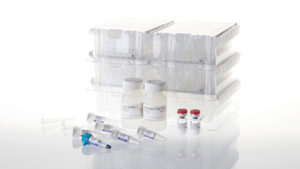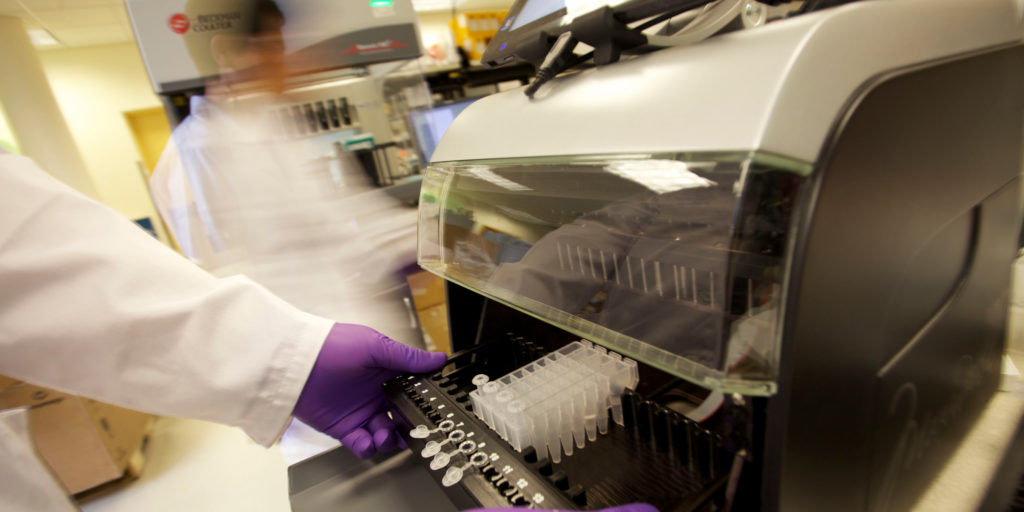Monitoring the use of performance-enhancing substances among athletes is complex and the requirements for tests and assays that detect use of such substances have changed significantly over the last few decades.

The haematological (blood) module of Athlete Biological Passport was adopted December 1, 2009 (ABP) by the World Anti-Doping Agency. The module sets out standard protocols to monitor doping of professional athletes by looking at changes in biological parameters, without relying on the detection of illegal compounds in body fluids. Such biological methods eliminate the need to develop and validate a test to detect every new compound that can be used for doping. The current version of the ABP, adopted in 2014, also adds monitoring of certain steroid use indicators from urine samples.
Blood doping which aims at increasing red blood cells so that more oxygen can be transported to muscles to increase stamina or performance is particularly difficult to detect. There are typically three ways that it is accomplished: use of erythropoietin (EPO) or synthetic oxygen carriers and blood transfusions. While transfusions of large volumes of blood or use of EPO can be detected, microdosing EPO or transfusing smaller volumes of packed red blood cells is much harder to detect.
Nicolas Leuenberger and colleagues at the Swiss Laboratory for Doping Analysis have developed a method to detect blood doping. In addition to addressing the detection of blood doping, his laboratory is also concerned about easing the transport and storage requirements for samples and ensuring that sample collection does not adversely affect athlete performance.
Improving Collection and Storage of Blood Samples
Because sample collection and storage are so critical to accurate test results, any new assays developed to detect blood doping benefit from ease of collection and storage. The Leuenberger laboratory investigated the use of the TAP™ Push Button collection device, which is billed as a simple method for blood collection that is easy to use and eliminates the need for painful needle sticks or finger pricks that can affect athlete performance. After TAP collection, 20µl of blood from the device was placed on to filter paper and dried (dried blood samples; DBS), which are much easier to store and transport from collection site to laboratory.
An RNA Biomarker for Blood Doping
Blood withdrawal and autologous transfusion or recombinant human EPO injection stimulate erythropoiesis and immature red blood cells can be distinguished based on their gene expression profiles. One of the genes that is expressed by immature red blood cells is aminoleuvulinate synthase 2, a gene that encodes an enzyme ALAS2 involved in the synthesis of heme, a pathway active during RBC maturation. RNA transcripts are unstable and tend to degrade rapidly, so isolating linear RNA transcripts from a collected sample can be difficult. However circular RNAs (circRNAs) are a class of RNA molecule produced by the backsplicing of pre-mRNAs that are high in abundance, quite stable and maintain cell-type specific expression. The Leuenberger laboratory developed a method for measuring the linear and circular forms of ALAS2 RNA in DBS to monitor erythropoiesis.

One of the greatest challenges in developing this protocol was achieving efficient RNA extraction from only 20ul of dried blood. Leuenberger and his colleagues adopted a two-step purification; beginning with a phenol:chloroform extraction on the DBS followed by a further purification on the Maxwell® RSC automated instrument, using the Maxwell RSC miRNA Serum and Plasma kit. Switching from a manual to an automated method for the second step was crucial. It reduced chances of contamination as well reduced pipetting errors, without compromising good quality and yield of RNA therefore contributing to assay reproducibility. To normalize volumes within the blood spot, the protocol uses RNA produced by housekeeping genes. The work to automate the assay has been published in Bioanalysis.
What’s Next
This protocol is being tested to see if microdosing of EPO or small transfusions can also be detected by monitoring ALAS2 RNA expression in DBS. The Swiss laboratory of Doping Analysis is also in the process of developing a method to detect gene doping by isolating plasmid DNA from whole blood samples, using the Maxwell® RSC.
Additionally, the collection and storage methods used have implications for the clinic, especially for patients that need routine blood monitoring. The ability to isolate circular RNAs shows promise in forensic applications to identify body fluids.
Want to know more about how the Maxwell® RSC can give you the freedom to focus on the work that interests you the most? To learn more, click here.
